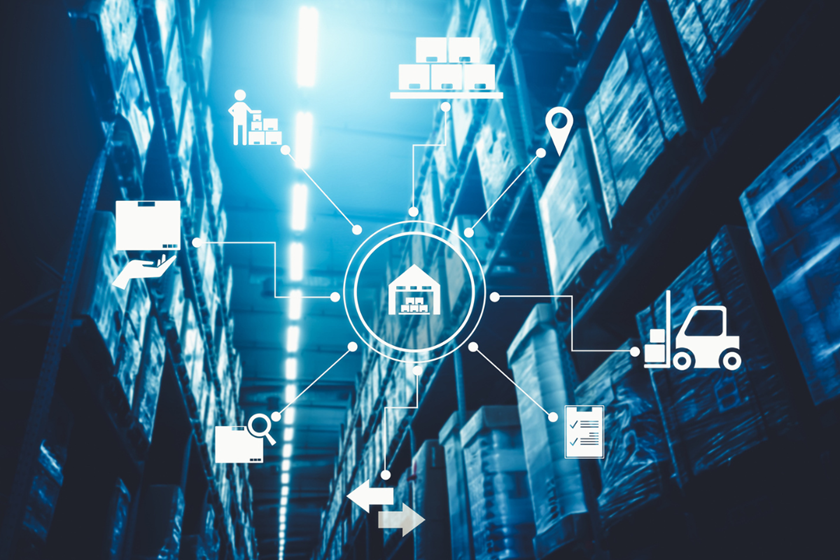In today’s volatile global economy, supply chain innovation has become the backbone of operational resilience. The days of relying solely on cost-efficiency and lean models are gone. In their place, forward-looking organizations are investing in technologies, strategies, and collaborative frameworks that help them respond faster, anticipate disruption, and absorb shocks without losing momentum.
This article explores how companies are using innovation to build resilient supply chains in 2025—not just to survive, but to lead.
1. Digital Twins and AI-Driven Climate Forecasting
Supply chain visibility alone is no longer enough; companies now require predictive and prescriptive capabilities. One of the most advanced examples comes from Romania’s Katty Fashion, which uses digital twin simulations to reroute production dynamically based on supply shocks and demand shifts. The company is part of the EU-funded R3GROUP, which develops climate-resilient production models across Europe.
AI is another game-changer. Nvidia’s Earth-2 platform offers high-resolution forecasting of environmental risks, enabling logistics managers to adjust shipping routes and warehouse inventories ahead of disruptive climate events. Meanwhile, Marsh McLennan’s Sentrisk tool helps companies map multi-tier supply chains and assess climate risk exposure using large language models (LLMs).
These tools provide real-time decision-making power, moving supply chains from reactive to anticipatory.
2. Collaborative Planning in the Metaverse
Supply chain innovation isn’t limited to analytics and automation. Real-time collaboration has been redefined through the convergence of Metaverse platforms and generative AI. A recent study published on arXiv shows how organizations are creating immersive digital environments where planners, suppliers, and partners can simulate disruptions, test recovery scenarios, and redesign fulfillment strategies instantly.
Integrating ChatGPT-style language agents into these systems facilitates multilingual coordination and accelerates consensus-building, especially in multi-country, multi-party ecosystems. These virtual rooms enable companies to visualize network behavior, align on response strategies, and act faster than traditional planning cycles allow.
3. Federated Learning: Supply Chain Visibility Without Data Leakage
One of the biggest challenges in building resilience is the lack of deep-tier visibility. Suppliers are often hesitant to share sensitive data due to IP or competitive concerns. Enter federated learning—a breakthrough that allows companies to collaboratively analyze risk and performance across a network without centralizing the raw data.
In 2025, companies are pairing Federated Learning with Graph Neural Networks (GNNs) to build knowledge graphs of supplier relationships, risk interdependencies, and logistical nodes. This innovation allows distributed parties to surface insights about supply chain fragility without compromising privacy.
It’s a powerful answer to the growing complexity of compliance regimes, especially in the EU and U.S., where companies are now accountable for ESG performance down to tier-3 and tier-4 suppliers.
4. Strategic Agility: Pre-Mortems and Inventory Buffers
While technology is vital, strategic agility remains foundational. Following Toyota’s post-Tohoku earthquake playbook, leading firms are incorporating “pre-mortem” planning into their supply chain design process. Rather than optimizing for lean inventory, they assess how each node in their network could fail and engineer flexible alternatives.
That includes:
- Maintaining just-in-case inventory for critical components
- Securing multi-sourcing agreements
- Localizing manufacturing for high-risk categories
These strategies allow for smoother responses to trade disruptions, extreme weather events, and supplier insolvency. In short, resilience is no longer reactive; it is architected.
5. Connected Data Chains and AI Orchestration
Microsoft’s Azure platform is leading a new class of supply chain operating systems that emphasize “connected data chains.” These are AI-powered ecosystems that link demand forecasting, production planning, transportation, and warehouse management in real time.
Rather than relying on manual escalations, connected data chains enable logistics decisions to be orchestrated automatically. For instance, if a delay is detected at port, AI systems can proactively reallocate inventory, reschedule transportation, or notify customers—without human intervention.
This level of orchestration reduces latency, improves customer satisfaction, and frees up operations teams to focus on strategic exceptions.
6. Insurtech and Sensor-Driven Risk Mitigation
Another area of rapid innovation is the convergence of insurance and supply chain monitoring. Parsyl, an insurtech startup backed by Lightsmith Group, uses embedded IoT sensors to monitor the condition of temperature-sensitive cargo in transit. This real-time data helps predict spoilage risk, enabling more accurate insurance underwriting and faster claims resolution.
In a time where shipping costs are volatile and supply chain insurance premiums are rising, tools like Parsyl offer financial resilience on top of operational visibility. They also allow procurement and logistics teams to select carriers and lanes based on historical cargo integrity, not just price.
7. Cross-Industry Partnerships and Shared Infrastructure
The fastest-growing supply chains in 2025 are collaborative. Logistics firms are forming alliances with fintech platforms, healthcare networks, and e-commerce giants to build shared micro-warehousing hubs, electrified transport corridors, and cross-dock facilities in strategic urban centers.
This type of cross-industry innovation reduces redundancy, improves last-mile efficiency, and enhances resilience by distributing fulfillment capability across multiple partners. For example, a pharma company might partner with a retail grocery chain to co-locate vaccine cold storage near dense population centers.
What Makes These Innovations Resilience-Enabling?
| Innovation Type | Resilience Contribution |
|---|---|
| Digital twins and AI | Forecasts disruptions, simulates recovery options in advance |
| Metaverse + Gen AI | Enables immersive collaboration and faster crisis alignment |
| Federated Learning | Surfaces deep-tier risk while protecting proprietary data |
| Strategic Agility | Builds flexibility into procurement and fulfillment decisions |
| Connected Data Chains | Reduces lag in execution; automates decisions across silos |
| Sensor-Powered Insurance | Mitigates financial risk; ensures quality in transit |
| Cross-Industry Collaboration | Spreads operational risk across partners; builds shared fulfillment nodes |
Final Thoughts
In 2025, supply chain innovation is no longer defined by efficiency alone. It’s about designing networks that can flex, absorb shocks, and recover faster than the competition. From AI-powered risk engines and federated learning platforms to digital twins and immersive metaverse planning, the tools are here.
The challenge for supply chain leaders is no longer whether to innovate—but how quickly they can operationalize these capabilities to build resilience that scales.
Because in today’s landscape, resilience is innovation. And innovation is resilience.
